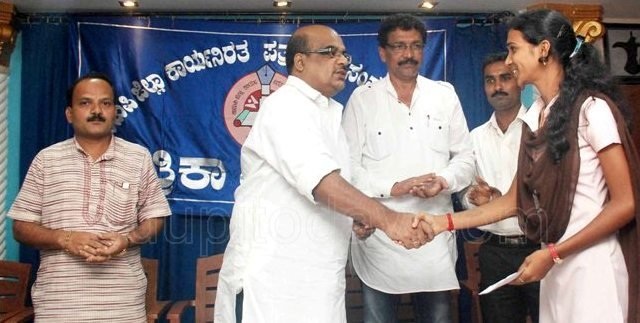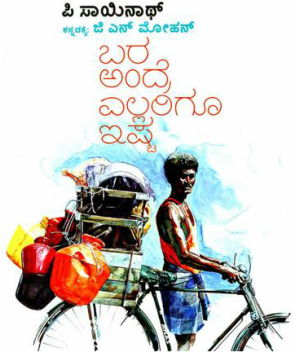
FEATURES » FRIDAY REVIEWPublished: August 20, 2015 17:50 IST | Updated: August 20, 2015 19:31 IST August 20, 2015Screaming to be seenImaging: M. Arivarasu
Has television changed the way we see and think? Is news more about theatrics than honest and unbiased presentation? Archana Nathan does a reality check.“You say the farmer died because of personal problems. No, wait, you say he died because of a failed love affair. Oh wait, actually, sometimes you even say that the one who died is not even a farmer! Aren’t you ashamed?” A news anchor on television says this and freezes. Two panels with the word ‘STRAIGHT’ typed in bold hover around his face. He looks at you from between those panels as if he is posing for a photo. The text disappears and then the anchor continues: “It is hard to tell if there are potholes on the street or if the street is somewhere between the numerous potholes. No area seems to be getting continuous water supply, anyway. And, oh let’s not talk about the abysmal condition of streetlights at all.” The television screen pauses again and the word ‘UNBIASED’ appears around the anchor. “We don’t want your speech. We don’t want your stories. All we want is to know what kind of solutions you’re offering to people’s problems. That is all!” he says. ‘FOR JUSTICE’, says the screen. Finally, the anchor concludes, “The people might spare you. The society might let you go. But this channel won’t spare you”, followed by ‘NO COMPROMISE’.
This is a rough translation of an advertisement run by a popular Kannada news channel for its prime-time debate show. Rather than the show, the advertisement actually showcases the anchor for it is he that is 'straight', 'unbiased', 'strives for justice' and 'will not compromise' etc. according to the channel. The ‘you’ in the clip are the politicians, who the anchor says he will not spare.
Incidentally, as sensational as it is, this advertisement could serve as a template for most anchor-driven shows on Kannada news channels because it encapsulates the tone and tenor of anchors today and the kind of debate that is increasingly taking place on news shows. Anchors, especially during prime-time, are heard and seen speaking breathlessly, often adopting an aggressive tone, taking on the onus of speaking for the rights (perceived or otherwise) of people, sometimes even out rightly dismissing what the panelists have to say and therefore, repeatedly saying sentences like ‘we want justice or nyaya’.
“There are two types of anchors: the traditional news presenters and those who conduct panel discussions. The second kind, apart from knowing their subject well, have to also know theatrics and be aggressive,” says G.N. Mohan, Senior Editor, ETV Kannada News. “This is the demand television makes of an anchor. We cannot present news the way it is done in the print medium. Television demands theatrics and drama. Sometimes, in the heat of the argument, he (or she) shouts back too,” he continues.
What Mohan describes has indeed become a Bible of sorts, for across the 13 channels that adorn the Kannada television news circuit, the rise of the controversial, aggressive and dramatic anchor is a common sight. In fact, this form of news presentation has become the trend across languages and news networks in the country. But, consciously limiting the discussion to Kannada alone, the question is this: why has Kannada TV journalism adopted this format? What is it that drives this need for aggression and sensationalism?
Sharmitha Shetty, who is an anchor on ETV Kannada News, says that aggression is necessary to attract viewers. “People like to watch a fight on television. Mostly, when a topic is picked for discussion, the thread of the argument is laid bare by our bosses. Sometimes, we are even asked to target some panelists. In that case, we have to do enough research to ensure we stick to our instructions. Also, sometimes, panelists attack the anchors. Then, it is a matter of defending one’s brand and hence the pressure falls on the anchor to argue on the channel’s behalf. The competition during prime-time is insane. We need to be aggressive and dramatic.”
On the other hand, other anchors argue that aggression is not staged but happens because of recalcitrant panelists. “There are guests who won’t answer a question straight and will instead reply with another question. In such cases, it might seem as if the anchors are shouting. So, sometimes, it is just the compulsion of keeping a discussion within limits. We might even have to throw in our own opinions to keep the discussion balanced, ” argues Radha Hiregoudar, Anchor, Public TV.
And yet, there are others who are quick to reprehend this trend as being a harmful one.“Aggression is attractive but it defeats the point of journalism which is essentially about balance and honesty. A hunt for TRPs is a reality and hence a lot of channels are using aggression and sensationalism as a technique to encash more ratings. But, often that results in the anchor delivering half-baked comments which can grossly mislead an audience,” says S.R. Aradhya, Chief Editor, Udaya News. With anchors becoming the judge, jury and executioner, he asks: “Isn’t the anchor’s job to act as a catalyst or steer the discussion rather than believing that his or her opinion is the public opinion?”
Perhaps, this is a passing phase. Till about a year ago, Kannada channels routinely featured anchors dressed as policemen delivering crime news (though still seen on few channels) and hosting family squabbles on State television. These have received flak and they are slowly being replaced by other programmes. Most anchors and editors contend that this format of debate came to Kannada news from national English news channels. A veteran journalist and head of a television channel in Kannada who spoke on the condition of anonymity says, “In Kannada, the electronic media boom happened a little late, especially when compared to other south Indian languages. Frankly, we were not prepared for it and we did not have the time to accept and adapt to it. So, all sorts of people entered the industry. And since we didn’t know anything we naturally took on a format that was already working.”
“The truth about contemporary journalism is that it is no longer a great thing,” he continues. “Every management wants to run it like a business. The extent and degree to which they do that is what matters and acts as a distinguishing factor,” he says.
Perhaps then, Kannada TV is yet to find the vocabulary and grammar that will assist its transition from this sensational phase to a more rational, well-grounded state. “Kannada TV is a crawling child. It needs some more years to be more mature-both in content delivery and in terms of sustaining a business model. Till this happens, channels must exercise caution and that is lacking unfortunately,” adds the journalist.
Let's go the Hindi way!
Even Kannada entertainment channels have imbibed a lot from channels up north. Take for instance, the sheer splurge in reality TV shows across Kannada channels. Popular show host, Akul Balaji, says, “We should be extremely proud that Kannada audiences have accepted reality TV in such a big way here. Back when I began, I didn’t think anchors would ever have a celebrity status as they have now. No other language has implemented the Hindi reality TV model the way we have. Kannada audience and producers have been open to experimentation.” But why copy a model from Hindi television? “Why not?” asks Akul. “When there is a concept that is already there and it is working, why not use it? We try not to go overboard with it and also try and package a message along with all the entertainment. But sometimes, we do cross the line,” he explains.
Fudged ratings?
One wonders how authentic TRP ratings are. Could it be that the rating agencies themselves are deciding what people want to see? "The agency that does a sampling for TRP is often one that knows nothing about journalism. They do a survey that is financially viable, perhaps using the mindset of people for whom aggression sells. So, they conclude that that is what the audience wants," said a journalist that did want to be quoted.
“Isn’t the anchor’s job to act as a catalyst or steer the discussion rather than believing that his or her opinion is the public opinion?”
Has television changed the way we see and think? Is news more about theatrics than honest and unbiased presentation? Archana Nathan does a reality check.“You say the farmer died because of personal problems. No, wait, you say he died because of a failed love affair. Oh wait, actually, sometimes you even say that the one who died is not even a farmer! Aren’t you ashamed?” A news anchor on television says this and freezes. Two panels with the word ‘STRAIGHT’ typed in bold hover around his face. He looks at you from between those panels as if he is posing for a photo. The text disappears and then the anchor continues: “It is hard to tell if there are potholes on the street or if the street is somewhere between the numerous potholes. No area seems to be getting continuous water supply, anyway. And, oh let’s not talk about the abysmal condition of streetlights at all.” The television screen pauses again and the word ‘UNBIASED’ appears around the anchor. “We don’t want your speech. We don’t want your stories. All we want is to know what kind of solutions you’re offering to people’s problems. That is all!” he says. ‘FOR JUSTICE’, says the screen. Finally, the anchor concludes, “The people might spare you. The society might let you go. But this channel won’t spare you”, followed by ‘NO COMPROMISE’.
This is a rough translation of an advertisement run by a popular Kannada news channel for its prime-time debate show. Rather than the show, the advertisement actually showcases the anchor for it is he that is 'straight', 'unbiased', 'strives for justice' and 'will not compromise' etc. according to the channel. The ‘you’ in the clip are the politicians, who the anchor says he will not spare.
Incidentally, as sensational as it is, this advertisement could serve as a template for most anchor-driven shows on Kannada news channels because it encapsulates the tone and tenor of anchors today and the kind of debate that is increasingly taking place on news shows. Anchors, especially during prime-time, are heard and seen speaking breathlessly, often adopting an aggressive tone, taking on the onus of speaking for the rights (perceived or otherwise) of people, sometimes even out rightly dismissing what the panelists have to say and therefore, repeatedly saying sentences like ‘we want justice or nyaya’.
“There are two types of anchors: the traditional news presenters and those who conduct panel discussions. The second kind, apart from knowing their subject well, have to also know theatrics and be aggressive,” says G.N. Mohan, Senior Editor, ETV Kannada News. “This is the demand television makes of an anchor. We cannot present news the way it is done in the print medium. Television demands theatrics and drama. Sometimes, in the heat of the argument, he (or she) shouts back too,” he continues.
What Mohan describes has indeed become a Bible of sorts, for across the 13 channels that adorn the Kannada television news circuit, the rise of the controversial, aggressive and dramatic anchor is a common sight. In fact, this form of news presentation has become the trend across languages and news networks in the country. But, consciously limiting the discussion to Kannada alone, the question is this: why has Kannada TV journalism adopted this format? What is it that drives this need for aggression and sensationalism?
Sharmitha Shetty, who is an anchor on ETV Kannada News, says that aggression is necessary to attract viewers. “People like to watch a fight on television. Mostly, when a topic is picked for discussion, the thread of the argument is laid bare by our bosses. Sometimes, we are even asked to target some panelists. In that case, we have to do enough research to ensure we stick to our instructions. Also, sometimes, panelists attack the anchors. Then, it is a matter of defending one’s brand and hence the pressure falls on the anchor to argue on the channel’s behalf. The competition during prime-time is insane. We need to be aggressive and dramatic.”
On the other hand, other anchors argue that aggression is not staged but happens because of recalcitrant panelists. “There are guests who won’t answer a question straight and will instead reply with another question. In such cases, it might seem as if the anchors are shouting. So, sometimes, it is just the compulsion of keeping a discussion within limits. We might even have to throw in our own opinions to keep the discussion balanced, ” argues Radha Hiregoudar, Anchor, Public TV.
And yet, there are others who are quick to reprehend this trend as being a harmful one.“Aggression is attractive but it defeats the point of journalism which is essentially about balance and honesty. A hunt for TRPs is a reality and hence a lot of channels are using aggression and sensationalism as a technique to encash more ratings. But, often that results in the anchor delivering half-baked comments which can grossly mislead an audience,” says S.R. Aradhya, Chief Editor, Udaya News. With anchors becoming the judge, jury and executioner, he asks: “Isn’t the anchor’s job to act as a catalyst or steer the discussion rather than believing that his or her opinion is the public opinion?”
Perhaps, this is a passing phase. Till about a year ago, Kannada channels routinely featured anchors dressed as policemen delivering crime news (though still seen on few channels) and hosting family squabbles on State television. These have received flak and they are slowly being replaced by other programmes. Most anchors and editors contend that this format of debate came to Kannada news from national English news channels. A veteran journalist and head of a television channel in Kannada who spoke on the condition of anonymity says, “In Kannada, the electronic media boom happened a little late, especially when compared to other south Indian languages. Frankly, we were not prepared for it and we did not have the time to accept and adapt to it. So, all sorts of people entered the industry. And since we didn’t know anything we naturally took on a format that was already working.”
“The truth about contemporary journalism is that it is no longer a great thing,” he continues. “Every management wants to run it like a business. The extent and degree to which they do that is what matters and acts as a distinguishing factor,” he says.
Perhaps then, Kannada TV is yet to find the vocabulary and grammar that will assist its transition from this sensational phase to a more rational, well-grounded state. “Kannada TV is a crawling child. It needs some more years to be more mature-both in content delivery and in terms of sustaining a business model. Till this happens, channels must exercise caution and that is lacking unfortunately,” adds the journalist.
Let's go the Hindi way!
Even Kannada entertainment channels have imbibed a lot from channels up north. Take for instance, the sheer splurge in reality TV shows across Kannada channels. Popular show host, Akul Balaji, says, “We should be extremely proud that Kannada audiences have accepted reality TV in such a big way here. Back when I began, I didn’t think anchors would ever have a celebrity status as they have now. No other language has implemented the Hindi reality TV model the way we have. Kannada audience and producers have been open to experimentation.” But why copy a model from Hindi television? “Why not?” asks Akul. “When there is a concept that is already there and it is working, why not use it? We try not to go overboard with it and also try and package a message along with all the entertainment. But sometimes, we do cross the line,” he explains.
Fudged ratings?
One wonders how authentic TRP ratings are. Could it be that the rating agencies themselves are deciding what people want to see? "The agency that does a sampling for TRP is often one that knows nothing about journalism. They do a survey that is financially viable, perhaps using the mindset of people for whom aggression sells. So, they conclude that that is what the audience wants," said a journalist that did want to be quoted.
“Isn’t the anchor’s job to act as a catalyst or steer the discussion rather than believing that his or her opinion is the public opinion?”




 RSS Feed
RSS Feed
